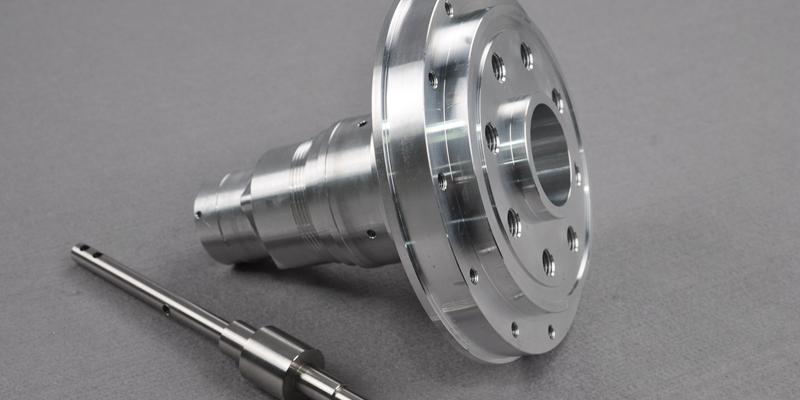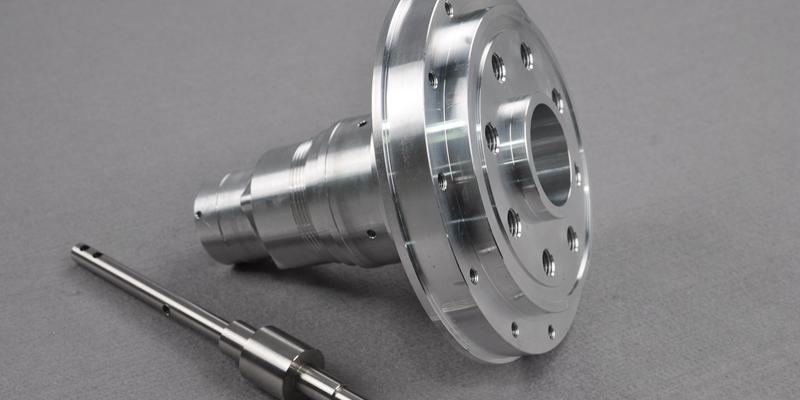
Today, manufacturing has become more complex and requires tight tolerances for many custom parts or prototypes. Therefore, manufacturers must utilize appropriate machining techniques to produce components that meet standard requirements. Precision grinding remains one of the most effective machining processes used in various industries to produce high-quality parts. Therefore, this article explores the different types, working principles, and applications of precision grinding. Let's get started right away.
What is precision grinding?
Precision grinding is a form of grinding process that involves producing and finishing parts to very tight tolerances. Typically, grinding is a subset of cutting as a metal cutting process in tool manufacturing and manufacturing. In production, grinding is used to process various materials, mainly to make flat cuts to obtain fine finishes, shapes and dimensions.
However, some industrial manufacturing processes require precision and accuracy, so there is little room for production error, which is true when wanting to produce certain components without compromise. Precision grinding therefore offers viable solutions to the problem of tight technical tolerances and finishing issues faced by most manufacturers. This grinding process can remove materials to produce custom parts with tight tolerance dimensions or high-quality surface finishes.
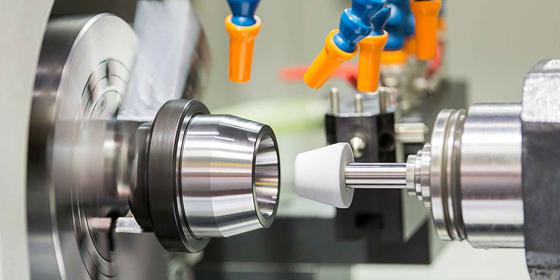
More specifically, high-precision grinding allows parts to be machined with the highest precision, achieving very tight tolerances of +/- 13 microns to +/- 1.3 microns for diameter and +/- 2.5 to 0. 25 microns for roundness. This method can also be used to achieve accuracy on typical surfaces with a tolerance range of 0.20 to 0.81 micrometers.
Advantages of precision grinding
Precision grinding offers certain advantages in manufacturing. Check it out below:
Cost efficiency and accuracy
High-precision grinding guarantees a high degree of precision and is also an economical method for producing various parts. Most metal fabricators use this machining method to reproduce certain dimensions of complex parts within the acceptable range of variation. Additionally, the grinding process helps increase the productivity of manufacturing precise parts while making quality control more consistent and easier. In short, precision grinding is an efficient manufacturing process.
Reliable alternative to mechanical processing
Experienced machinists use precision grinding processes when other machining methods or techniques, such as milling and turning, cannot be used. This usually happens for the following reasons:
- type of material;
- The required quality of surface finish;
- The need to produce parts with small diameters and tight tolerances.
Types of precision grinding
There are different types of precision grinding processes used to obtain accurate surface finish and dimension for various components. The characteristics of these grinding operations determine their respective application in specific machining projects. Therefore, manufacturers must select the correct grinding process depending on the size, shape, surface finish and desired production rate of the part.
Here are some of the most common types of precision grinding.
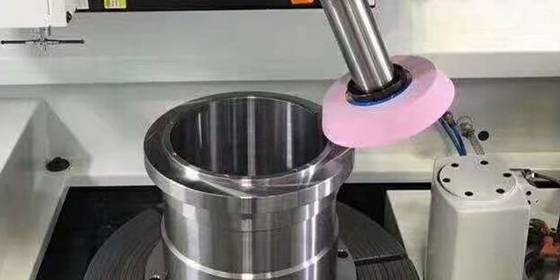
1. Surface grinding
Surface grinding is a machining process that creates a smooth finish on flat surfaces, giving them a more refined appearance or giving them a specific function. It uses a rotating wheel coated with coarse abrasive grains to remove small chips or excess material from the surface of the part. In addition to the grinding wheel, the surface grinder consists of a mandrel and a table that fixes the material using magnets.
CNC integration provides automated capabilities that enable consistent material removal, ensuring high volume production. However, most precision surface grinding processes are often used to make both ends of a metal part perpendicular to the outside diameter. In other cases it is used to obtain parallelism or perpendicularity in cubic parts.
When CNC turning and milling processes are not precise enough for a manufacturing project, precision surface grinding is an excellent alternative for manufacturers. This is because the grinding process can achieve production tolerances in the micron range and surface finishes down to 0.2 microns. Note that the quality of the surface finish obtained with surface grinding depends on factors such as grinding wheel speed, feed rate, wheel size, abrasive material and material type.
Additionally, surface grinding works well for materials that can be easily held by the magnetic chuck without clogging the grinding wheel. These materials include cast iron and many types of steel. Other materials such as aluminum, brass and plastic obstruct the disc and prevent cutting. Therefore, only experienced machinists perform surface grinding operations on these materials.
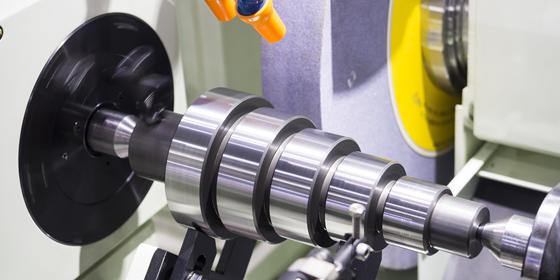
2. Cylindrical grinding processing
This grinding process, also known as center grinding, is used for cylindrical surfaces and corners of suitable parts. A cylindrical grinding machine consists of a grinding wheel, a chuck, two hubs that hold the workpiece in place, and other functions to drive the workpiece. Additionally, most cylindrical grinding machines have a rotating device to produce tapered parts. The grinding wheel can also have different shapes. Machinists use standard disc-shaped discs to produce tapered or straight parts, while shaped discs help produce shaped parts.
In short, in cylindrical grinding, the workpiece is clamped on the tip and rotated by the rotating chuck or tip drive. The workpiece and grinding wheel use separate rotary motors with different speeds. Furthermore, the disc and the workpiece move parallel to each other in the longitudinal and radial directions.
In general, precision cylindrical grinding ensures smooth surfaces on round objects. Additionally, standard precision tolerances for cylindrical grinding are 1.3 microns for diameter and 0.25 microns for roundness. There are two main types of cylindrical grinding:
Bore or inner diameter grinding
As the name suggests, this type of cylindrical grinding involves removing excess material from the inside diameter (ID) of pipes or other features of the part, including holes or bores. Manufacturers use ID grinding in conjunction with honing to produce smooth surfaces and parts with tight tolerances.
In both internal grinding and honing, the workpiece is held in place and rotated to limit the size of the workpiece's internal diameter so that it becomes smaller than the diameter of the grinding wheel.
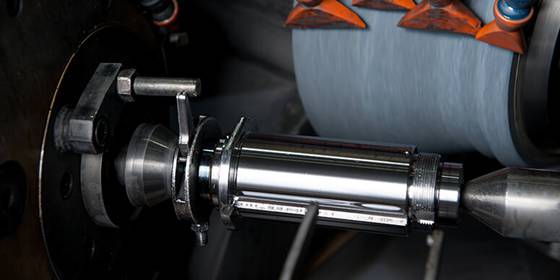
Outside Diameter or Outside Diameter (OD) Grinding
In outer diameter grinding, the outer surface of the part held by the ends is shaped with a single grinding wheel. During grinding of the outer diameter, both the grinding wheel and the workpiece constantly rotate in the same direction around the central axis. Although outer diameter grinding applies to various part shapes such as cylinders, ellipses, and cams, it is important to note that the workpiece must have a large enough center shaft diameter that allows for smooth rotation.
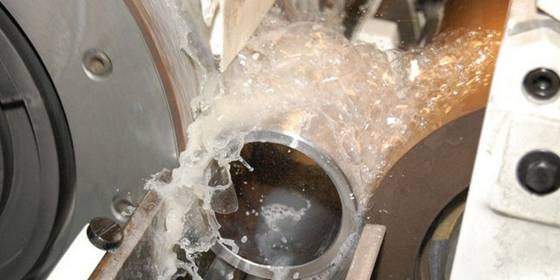
3. Centerless grinding
This grinding process removes minute materials to give a specific surface finish to the outer diameter or circumference of small, cylindrical parts. In most cases, manufacturers use centerless grinding to improve the surface finish of turned and machined parts for greater precision. Unlike traditional OD grinding, in centerless grinding the workpiece is not trapped between centers or mandrels. Instead, the centerless grinder uses a support blade to support the workpiece on the outer diameter.
Furthermore, two grinding wheels are used in centerless grinding: the grinding wheel and the control grinding wheel. Although both grinding wheels rotate in the same direction, the control wheel rotates at a higher speed than the control wheel. This means that very small parts can be ground with centerless grinding.
Unlike other grinding processes, the workpiece moves through the centerless grinding machine without any devices or motors. Instead, the grinding process controls movement through the so-called “magic angle” between the two discs.
Precision Grinding Applications in Manufacturing
In most manufacturing industries, precision grinding is widely used as the final machining process for various components of different sizes to ensure precision and high productivity. This includes the automotive industry, aviation bearings, electrical engineering, medical, etc. Here are some common precision grinding applications:
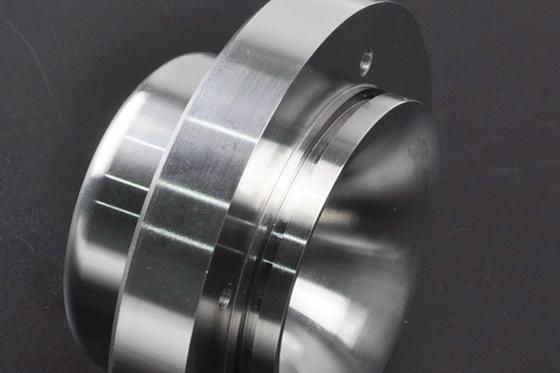
- Microfinishing of flat and cylindrical surfaces
- Grinding of outer circles, holes and hole systems
- Step grinding
- Precise machining of aerospace fasteners, tubes, rods, wires, rolled tools, etc.
Working principles and precautions of precision grinding machine
The precision grinder uses a rotating grinding wheel made of abrasive grains to remove material from workpieces. The grinder also includes an electric motor that transmits the driving force to the grinding wheel through the belt and pulley system. Most sander motors spin at a set speed of 150 to 15,000 rpm, which varies depending on the type of sanding project.
Precautions when using a grinder
To use a grinder safely, you must follow several safety measures. Before operating the shredder, you should always wear personal protective equipment (PPE). Protects against sparks and other flying particles during grinding. PPE includes apron, goggles, gloves, dust mask, hearing protection, safety boots, etc.
There are some tips you should keep in mind to use grinders safely:
- Make sure the grinding guard is securely attached.
- Use the correct disc for each sanding operation.
- Make sure flanges and other parts are properly assembled and tightened.
- Clamp the workpiece to prevent bending during sanding.
- Check the grinding speed and adjust to the correct intensity.
- Make sure the work area is clean.
Main components of a grinding machine
A typical grinder consists of several components. Check out the main parts below:
- grinding wheel
- Wheel protection
- Grinding wheel head
- Cross wheels
- base
- Table
- To divide
- Refrigerant supply nozzle
Get high-precision grinding services at WayKen
Precision grinding operations are common in many industries today. Some manufacturing companies offer precision grinding services on-site, while others outsource them to companies that specialize in this machining service.
Contact us today for personalized support service and receive a response within 12 hours.
Concluding
Precision grinding remains one of the most effective and efficient machining techniques for producing and finishing parts with well-defined tolerance requirements. It offers advantages such as cost efficiency and accuracy, easy quality control and increased productivity. Therefore, precision grinding is now used in many industries to create high-quality surfaces.
Common questions
How accurate is the grinder?
In general, the accuracy of the grinding machine varies according to the manufacturing project. This is because some grinding operations quickly remove large quantities of metal parts. However, for most applications such as finishing process, the grinding machine accuracy is in the range of +/- 0.000025 mm. Experts often use grinders to remove small amounts of metal, 0.25 to 0.50 mm deep.
What is the cutting speed of the grinder?
The cutting speed of the grinder is ideally between 20 and 25 m/s. For most surface grinding operations, experts use grinding wheel speeds of 30 to 35 m/s. However, keep in mind that grinding machines can also be used successfully at speeds of less than 1 m/s. Furthermore, the cutting speed of a 0.2 mm grinding tip rotating at 40,000 revolutions per minute is approximately 0.4 m/s.
Furthermore, high-speed grinding uses special grinding wheels with cutting speeds of up to 100 m/s. In most cases, high-speed grinding provides greater productivity and efficiency, as well as improved grinding wheel life due to lower grain load.

